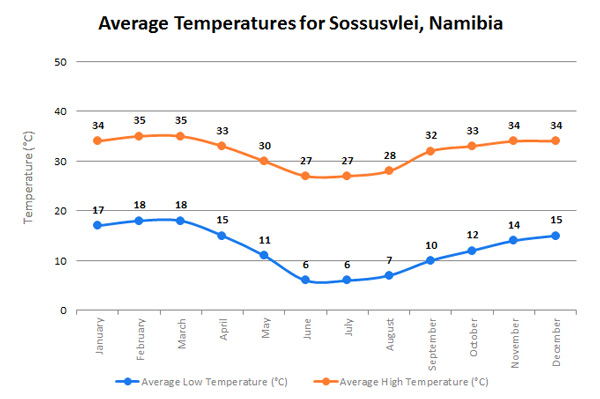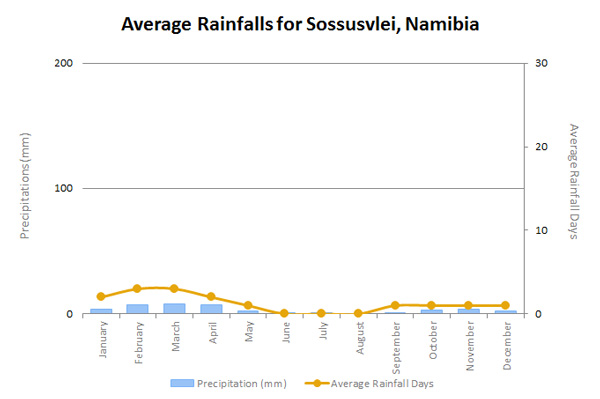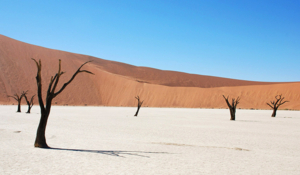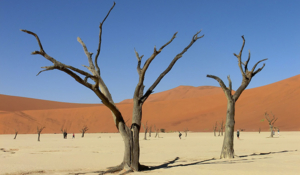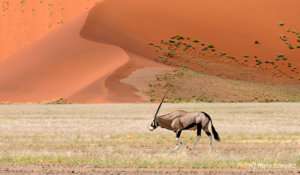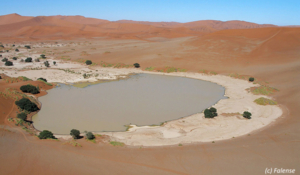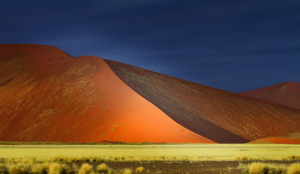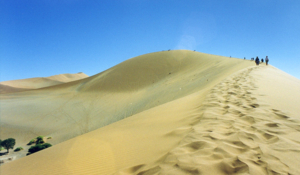Sossusvlei
Sossusvlei is the most frequently visited section of the massive 50,000 sqkm Namib Naukluft National Park that has become known as Sossusvlei, famous for its towering apricot coloured sand dunes that can be penetrated by following the Tsauchab River valley. Sossusvlei itself is actually a clay pan set amidst these star shaped dunes, which stand up to 300m above the surrounding plains ranking them among the tallest dunes on earth. The deathly white clay pan contrasts against the orange sands and forms the endpoint of the ephemeral Tsauchab River, within the interior of the Great Sand Sea. The river course rises south of the Naukluft Mountains in the Great Escarpment. It penetrates the sand sea for some 55km before it finally peters out at Sossusvlei, about the same distance from the Atlantic Ocean.
Until the encroaching dunes blocked its course around 60,000 years ago, the Tsauchab River once reached the sea; as ephemeral rivers still do in the northern half of the Namib. Sand-locked pans to the west show where the river previously flowed, before dunes shifted its endpoint to where it currently gathers at Sossusvlei. Roughly once a decade rainfall over the catchment area is sufficient to bring the river down in flood and fill the pan. On such occasions the mirror images of dunes and camel thorn trees around the pan are reflected in the water. Sossusvlei is the biggest of four pans in the vicinity. Another, famous for its gnarled and ghostly camel thorn trees, is Deadvlei which can be reached on foot over 1km of sand. Deadvlei’s striking camel thorn trees; dead for want of water, still stand erect as they once grew. They survived until about 900 years ago when the sand sea finally blocked the river from occasionally flooding this pan.



